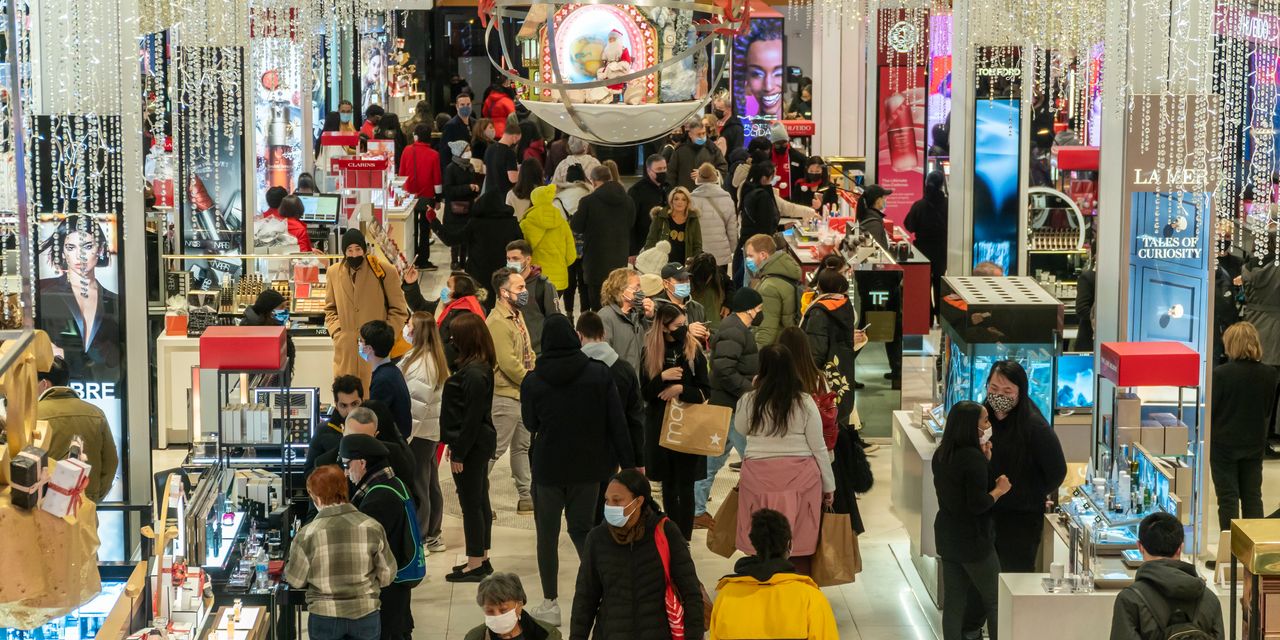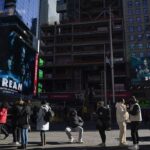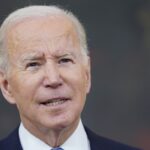
The number of diners seated at restaurants nationwide was down 15% in the week ended Dec. 22 from the same period in 2019, a steeper decline than in late November, data from reservations site OpenTable show. U.S. hotel occupancy was at 53.8% for the week ended Dec. 18, slightly below the previous week’s level, according to STR, a global hospitality data and analytics company.
Rising case numbers are leading many businesses to close for a short period, entertainment venues to cancel shows, universities to shift classes online and offices to delay or reverse reopening plans.
“We are still on track for very strong fourth-quarter consumption, but I am now seeing that that momentum continues to fade,” said Aneta Markowska, chief economist at Jefferies LLC.
Still, low unemployment, substantial savings and briskly rising wages are giving Americans money to spend. Many are also eager to go out and gather with family after nearly two years of social-distancing protocols. In the 10 days through Dec. 22, the number of travelers passing through Transportation Security Administration checkpoints was more than double the number of passengers flying in the same period of 2020, though still below 2019 levels.
Employers are clinging to workers in a tight labor market. Jobless claims, a proxy for layoffs, were unchanged at 205,000 in the week ended Dec. 18, the Labor Department said Thursday. Claims are hovering near the lowest level in more than half a century despite rising concerns about Omicron.
Consumers boosted their spending by 0.6% last month, a slowdown from 1.4% growth in October, the Commerce Department reported Thursday. Economists attributed part of the November slowdown to consumers shifting their holiday purchases a month earlier, amid warnings of potential shortages due to supply-chain problems.
For now, economists expect the highly contagious Omicron variant to cause a short-term soft patch for spending and broader economic growth as some people stay home.
Many economists have lowered their growth projections for early 2022 due to growing concerns about the latest surge in coronavirus cases. The forecasting-firm Oxford Economics now expects U.S. gross domestic product to grow at a 2.5% annual rate in the first quarter, down from a previous estimate of 3.4% growth.
Much of the difference in output could be delayed, rather than lost altogether. Economists at Nomura lowered GDP forecasts for the current quarter and the first quarter of 2022, in part reflecting forecasts for weaker consumer spending tied to Omicron. However, they expect growth to pick up in the second half of next year as pandemic-induced supply-chain disruptions ease and inventory investment that was pushed off materializes.
Though each wave of rising Covid-19 cases appears to be less detrimental to the economy than the one before it, some economists say that Omicron poses different threats.
For instance, Omicron is hitting the Northeast harder than other recent virus surges. Businesses in the region tend to be more willing to impose their own restrictions to curtail the virus than some other areas of the country, said Ms. Markowska of Jefferies.
The economy is also further into the reopening process than earlier in the pandemic, meaning Omicron has the potential to reverse reopenings rather than just delay them, Ms. Markowska said. She said that office occupancy might decline due to Omicron’s spread, which could damp demand for services such as cafeterias.
CNN President Jeff Zucker on Saturday told staffers the network was closing its offices with the exception of those who need to be there to perform their jobs. Ford Motor Co. , Uber Technologies Inc. and Alphabet Inc.’s Google all delayed office returns recently amid Omicron’s spread.
Bars in New York and Nashville announced temporary closures due to breakthrough infections among staff. A museum at the University of Illinois at Chicago said it would shut its doors for over a month and only offer virtual tours amid the rapid spread of the Omicron variant.
Some of the most popular Broadway shows, including “Hamilton” and “The Lion King,” have canceled performances through Christmas. Harvard University said it would start the winter semester online for three weeks to reduce density on campus.
Omicron is also keeping some sick workers at home for a period. This sort of dynamic could further restrain factories’ ability to pump out goods. Product shortages have been a major impediment to consumers’ ability to spend.
“It’s not that there’s a lack of demand for goods; in fact, that’s been one of the big surprises of 2021,” said Andrew Hollenhorst, chief U.S. economist at Citigroup Inc. “It goes back to the supply chain. You just cannot source these goods.”
A dearth of available goods could drive inflation higher. The personal-consumption expenditures price index, which is the Federal Reserve’s preferred inflation gauge, rose 5.7% in November from a year earlier, the fastest increase since 1982, the Commerce Department said Thursday. So-called core prices, which exclude volatile food and energy items, increased 4.7% year-over-year in November, the highest reading since 1989.
That meant after adjusting for inflation, consumer spending was unchanged in November from October, and after-tax personal income fell 0.2%.
So far, fast-rising costs don’t appear to be derailing consumers’ appetite to spend, though some individuals are concerned about the longer-term outlook for inflation.
David Esguerra, a 35-year-old from Phoenix, said he has seen prices rise rapidly. Pet-grooming services—including a bath and nail trimming—for his terrier mix Sofie have shot up to about $80 from $60 last year. Croissants at the farmers market cost roughly $6 this year, up from $4 in 2020, he said.
The supply-chain engineer’s pay raise this year was below the rate of inflation. As a result, he has adjusted his spending habits. For instance, he sought out furniture on secondhand markets like Craigslist to outfit his new home, and he is cutting back on purchases of clothes, shoes and phone accessories.
Mr. Esguerra isn’t overly concerned about his ability to afford daily necessities in the short term. He worries, though, about whether this bout of inflation will last. “My concern is more about long-term, how is this going to affect my financial future?” he said. “Is inflation going to stay high?”
Waning fiscal stimulus could also influence some contours of the economy’s growth path. After the pandemic hit in spring 2020, the federal government responded with expanded unemployment benefits of up to $600 extra a week, multiple rounds of stimulus checks and a boost in the 2021 child tax credit by as much as $1,600 per child.
Americans are now running through large piles of extra cash they accumulated as a result of government stimulus. As they deplete their savings, some workers might re-enter the labor force and help businesses fill job openings and meet production needs. With a much smaller share of worker incomes coming from government stimulus spending, wage growth will become a more important source of spending power in the coming months.
Write to Sarah Chaney Cambon at [email protected] and Harriet Torry at [email protected]
Copyright ©2021 Dow Jones & Company, Inc. All Rights Reserved. 87990cbe856818d5eddac44c7b1cdeb8







